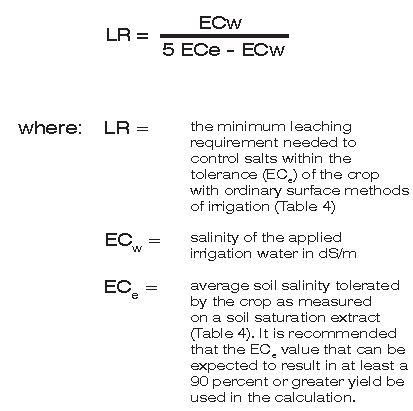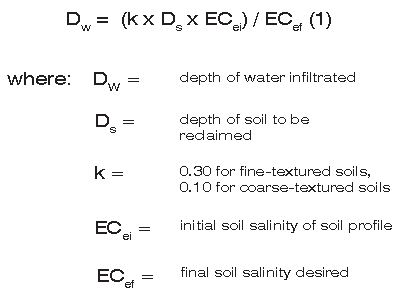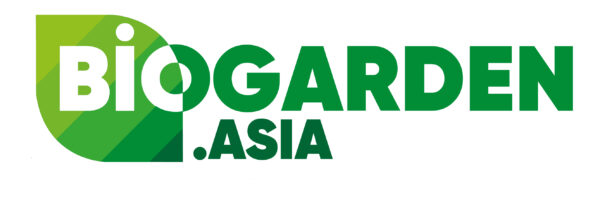No products in the cart.
NEWS
Colorado State University
Print this fact sheet
by G.E. Cardon, J.G. Davis, T.A. Bauder, and R.M. Waskom* (10/14)
Quick Facts…
- Accumulation of salts in irrigated soils is present in most irrigated regions of Colorado.
- Crop losses may occur with irrigation water containing as little as 700 to 850 mg/L TDS (total dissolved solids) or EC>1.2 dS/m.
- Salt-affected soils may inhibit seed germination, retard plant growth, and cause irrigation difficulties.
- Saline soils cannot be reclaimed by chemical amendments, conditioners or fertilizers.
- Saline soils are often reclaimed by leaching salts from the plant root zone.
Salinity problems are caused from the accumulation of soluble salts in the root zone. These excess salts reduce plant growth and vigor by altering water uptake and causing ion-specific toxicities or imbalances. Establishing good drainage is generally the cure for these problems, but salinity problems are often more complex. Proper management procedures, combined with periodic soil tests, are needed to prolong the productivity of saltaffected soils.
This fact sheet describes techniques for managing saline soils. Management for sodic soils may differ and is described in fact sheet 0.504, Managing Sodic Soils. You also may want to review fact sheet 0.521, Diagnosing Saline and Sodic Soil Problems to determine if you have a saline soil, sodic soil or perhaps another problem in your field.
Salt Sources
Saline soils contain large amounts of water soluble salts that inhibit seed germination and plant growth. The salts are white, chemically neutral, and include chlorides, sulfates, carbonates and sometimes nitrates of calcium, magnesium, sodium and potassium (Table 1).
Saline soils are found throughout Colorado. These salts originate from the natural weathering of minerals or from fossil salt deposits left from ancient sea beds. Salts accumulate in the soil of arid climates as irrigation water or groundwater seepage evaporates, leaving minerals behind. Irrigation water often contains salts picked up as water moves across the landscape or are found naturally in groundwater. Salts also may come from human-induced sources such as municipal runoff or water treatment. A detailed description of how irrigation water quality affects crop production and contributes to soil salinity is found in fact sheet 0.506, Irrigation Water Quality Criteria.
Table 1. Common salt compounds. Salts are ionic crystalline compounds consisting of a cation and an anion. Salt compound Cation (+) Anion (-) Common name NaCl sodium chloride halite (table salt) Na2SO4 sodium sulfate Glauber’s salt MgSO4 magnesium sulfate epsom salts NaHCO3 sodium bicarbonate baking soda Na2CO3 sodium carbonate sal soda CaSO4 calcium sulfate gypsum CaCO3 calcium carbonate calcite (lime)
Measuring Soil Salinity
Salinity is measured by passing an electrical current through a soil solution extracted from a saturated soil sample. The ability of the solution to carry a current is called electrical conductivity (EC). EC is measured in deciSiemens per meter (dS/m), which is the numerical equivalent to the old measure of millimhos per centimeter (Table 2). The lower the salt content of the soil, the lower the dS/m rating and the less the effect on plant growth. Soil samples taken for soil fertility purposes are adequate for looking for trends in salinity, but may not provide the same information as sampling targeted for diagnosing salinity. Refer to 0.521, Diagnosing Saline and Sodic Soil Problems for more detail on assessing saline soil conditions.
Soil salinity can also be measured in the field with electromagnetic conductivity meters. This technology works through the use of a transmitting coil that induces a magnetic field into the soil. A receiving coil reads induced currents in the soil. Typically this instrument is towed or dragged behind an ATV and will take readings while driving in a pattern across the field. When combined with GPS technology, a map of salinity levels can be produced to show relative levels of salinity within a field. To compare to published salinity values, soil samples are required to calibrate the instrument to soil salinity levels in saturated soil pastes described above. Some USDA-Natural Resources Conservation Service (NRCS) offices and several commercial entities offer this service in Colorado.
Table 2. Terms, units and conversions. Symbol Meaning Units Total Salinity TDS Total dissolved solids mg/La; ppmb EC Electrical conductivity dS/mc; mmho/cmd; µmho/cme Conversions 1 dS/m = 1 mmho/cm = 1000 µmho/cm 1 mg/L = 1 ppm amg/L = milligrams per liter; bppm = parts per million; cdS/m = deciSiemens per meter at 25° C; dmmho/cm = millimhos per centimeter at 25° C; eµmho/cm = micromhos per centimeter at 25°C
Crop Tolerance to Soil Salinity
Excessive soil salinity reduces the yield of many crops. This ranges from a slight crop loss to complete crop failure, depending on the type of crop and the severity of the salinity problem. Yields of most crops are not significantly affected where salt levels are 0 to 2 dS/m. Generally, a level of 2 to 4 dS/m affects some crops. Levels of 4 to 5 dS/m affect many crops and above 8 dS/m affect all but the very tolerant crops (Table 3).
Although several treatments and management practices can reduce salt levels in the soil, there are some situations where it is either impossible or too costly to attain desirably low soil salinity levels. In some cases, the only viable management option is to plant salt-tolerant crops. Sensitive crops, such as pinto beans, cannot be managed profitably in saline soils. Table 3 shows the relative salt tolerance of field, forage, and vegetable crops. The table shows the approximate soil salt content (expressed as the electrical conductivity of a saturated paste extract (ECe) in dS/m at 25 degrees C) where 0, 10, 25, and 50 percent yield decreases may be expected. Actual yield reductions will vary depending upon the crop variety and the climatic conditions during the growing season.
Fruit crops may show greater yield variation because a large number of rootstocks and varieties are available. Also, stage of plant growth has a bearing on salt tolerance. Plants are usually most sensitive to salt during the emergence and early seedling stages. Tolerance usually increases as the crop develops.
The salt tolerance values apply only from the late seedling stage through maturity, during the period of most rapid plant growth. Crops in each class are generally ranked in order of decreasing salt tolerance.
Treatment of Saline Soil
Saline soils cannot be reclaimed by chemical amendments, conditioners or fertilizers. A field can only be reclaimed by removing salts from the plant root zone. In some cases, selecting salt-tolerant crops may be needed in addition to managing soils.
There are three ways to manage saline soils. First, salts can be moved below the root zone by applying more water than the plant needs. This method is called the leaching requirement method. The second method, where soil moisture conditions dictate, combines the leaching requirement method with artificial drainage. Third, salts can be moved away from the root zone to locations in the soil, other than below the root zone, where they are not Charmful. This third method is called managed accumulation.
Leaching Requirement
For most surface irrigation systems in Colorado (furrow and flood), irrigation inefficiency (or over-irrigation) generally is adequate to satisfy the leaching requirement. However, poor irrigation uniformity often results in salt accumulation in parts of a field or bed. Surface irrigators should compare leaching requirement values to measurements of irrigation efficiency to determine if additional irrigation is needed. Adding more water to satisfy a leaching requirement reduces irrigation efficiency and may result in the loss of nutrients or pesticides and further dissolution of salts from the soil profile.
Leaching is accomplished on a limited basis at key times during the growing season, particularly when a grower may have high quality water available. Surface water in most areas of the state tends to have lower salinity than shallow, alluvial groundwater. Deep groundwater may have an even lower salinity than either shallow groundwater or surface water. In situations where a grower has multiple water sources of varying quality, consider planned leaching events at key salinity stress periods for a given crop.
Most crops are highly sensitive to salinity stress in the germination and seedling stages. Once the crop grows past these stages, it can often tolerate and grow well in higher salinity conditions. Planned periodic leaching events might include a post-harvest irrigation to push salts below the root zone to prepare the soil (especially the seedbed/surface zone) for the following spring. Fall is the best time for a large, planned leaching event because nutrients have been drawn down. However, since each case is site-specific, examine the condition of the soil, groundwater, drainage, and irrigation system for a given field before developing a sound leaching plan.
Sprinkler-irrigated fields with poor water quality present a challenge because it is difficult to apply enough water to leach the salts and you cannot effectively utilize row or bed configurations to manage accumulation. Growers should monitor the soil EC and irrigation water salinity. Where adequate irrigation water exists above crop requirements, a leaching fraction (or percent of additional water needed above crop requirements) can be calculated using this equation:

The total annual depth of water that needs to be applied to meet both the crop demand and leaching requirement can be estimated from equation.
Leaching every year may be eliminated by growing salt sensitive crops early in the crop rotation following leaching. As salt accumulates, more salt-tolerant crops are grown. Leaching is performed following the last crop in the rotation. Crop rotation example are:
- pinto beans, corn, wheat, and barley
- onions, cantaloupe, and sorghum.
Leaching Plus Artificial Drainage
Where shallow water tables limit the use of leaching, artificial drainage may be needed. Cut drainage ditches in fields below the water table level to channel away drainage water and allow the salts to leach out. Drainage tile or plastic drainpipe can also be buried in fields for this purpose. Proper design and construction of a drainage system is critical and should be performed by a trained professional, such as your local USDA-NRCS.
With all artificial drainage systems you must also consider disposal of the drainage water. Restrictions on the discharge of drain water to streams may apply in certain situations and should be investigated through the Colorado Department of Public Health and Environment. In the case of regulated discharge, treatment or collection and evaporation of the water on site may be required and may add significant costs.
The advantage of artificial drainage is that it provides the ability to use high quality, low salinity irrigation water (if available to a grower) to completely remove salts from the soil. However, artificial drainage systems will not work where there is no saturated condition in the soil. Water will not collect in a drain if the soil around it is not saturated.
After drainage appears adequate, the leaching process can begin. The following equations can be used to estimate how much water is required to leach salts for reclamation purposes.

This equation can be used to estimate the depth of water to apply for simple continuous ponding with one application of water. When intermittent ponding or sprinkler irrigation is used, k = 0.1 for all soils. With intermittent ponding, several small applications are applied. Using several small applications requires less water than one single application. See the UC Davis publication cited below for additional guidelines on using this equation for reclamation leaching.
Good uniformity: salts accumulate in the center of the bed and away from plants.
Poor uniformity: salts accumulate toward edge of bed near one row.
Figure 1. Salt management in double-row bed system.
Uniform, healthy plants with alternate furrow irrigation (salt accumulates in the dry furrows).
Irregular growth due to variable accumulation of salt (plants may overcome this situation if roots can grow out of the saline area).
Figure 2. Salt management in single-row bed systems.
Managed Accumulation
In addition to leaching salt below the root zone, salts can also be moved to areas away from the primary root zone with certain crop bedding and surface irrigation systems. Figures 1 and 2 illustrate several ways to manage salt accumulation in this manner. The goal is to ensure the zones of salt accumulation stay away from germinating seeds and plant roots. Irrigation uniformity is essential with this method. Without uniform distribution of water, salts will build up in areas where the germinating seeds and seedling plants will experience growth reduction and possibly death.
Double-row bed systems require uniform wetting toward the middle of the bed. This leaves the sides and shoulders of the bed relatively free from injurious levels of salinity. Without uniform applications of water (one furrow receiving more or less than another), salts accumulate closer to one side of the bed. Periodic leaching of salts down from the soil surface and below the root zone may still be required to ensure the beds are not eventually salted out.
Alternate furrow irrigation may be desired for single-row bed systems. This is accomplished by irrigating every other furrow and leaving alternating furrows dry. Salts are pushed across the bed from the irrigated side of the furrow to the dry side. Care is needed to ensure enough water is applied to wet all the way across the bed to prevent build up in the planted area. This method of salinity management can still result in plant injury if large amounts of natural rainfall fill the normally dry furrows and push salts back across the bed toward the plants. This phenomenon also occurs if the normally dry furrows are accidentally irrigated.
Table 3. Potential yield reduction from saline soils for selected crops. Field crops Barley Sugarbeets* Wheat Sorghum Soybean Corn Bean Forages Tall wheatgrass Wheatgrass Crested wheatgrass Tall fescue Orchardgrass Alfalfa Meadow foxtail Cloveralsike, red, ladino, strawberry Bluegrass and other turf ** Vegetables Broccoli Cucumber Cantaloupe Spinach Cabbage Potato Sweet corn Lettuce Onion Carrot *Sensitive during germination and emergence, ECe should not exceed 3dS/m at this time. Excerpted from R. S. Ayers and D.W. Westcot, 1976, Water Quality for Agriculture, Irrigation and Drainage Paper 29, FAO, Rome. Crop salt tolerance data in the table were developed, almost entirely, by the U.S. Salinity Laboratory, Riverside, CA. **For specifics on turfgrass species, see Colorado State University Extension fact sheet 7.227, Growing Turf on Salt-Affected Sites.
Other Management Options
Residue Management
Crop residue at the soil surface reduces evaporative water losses, thereby limiting the upward movement of salt (from shallow, saline groundwater) into the root zone. Evaporation and thus, salt accumulation, tends to be greater in bare soils. Fields need to have 30 percent to 50 percent residue cover to significantly reduce evaporation. Under crop residue, soils remain wetter, allowing fall or winter precipitation to be more effective in leaching salts, particularly from the surface soil layers where damage to crop seedlings is most likely to occur.
Plastic mulches used with drip irrigation effectively reduce salt concentration from evaporation. Sub-surface drip irrigation pushes salts to the edge of the soil wetting front, reducing harmful effects on seedlings and plant roots.
Pre-plant Irrigation
As mentioned before, most crop plants are more susceptible to salt injury during germination or in the early seedling stages. An early-season application of good quality water, designed to fill the root zone and leach salts from the upper 6 to 12 inches of soil, may provide good enough conditions for the crop to grow through its most injury-prone stages.
Irrigation Frequency Management
Salts are most efficiently leached from the soil profile under higher frequency irrigation (shorter irrigation intervals). Keeping soil moisture levels higher between irrigation events effectively dilutes salt concentrations in the root zone, thereby reducing the salinity hazard.
Most surface irrigation systems (flood or furrow systems) cannot be controlled to apply less than 3 or 4 inches of water per application and are not generally suited to this method of salinity control. Sprinkler systems, particularly center-pivot and linear-move systems configured with low energy precision application (LEPA) nozzle packages or properly spaced drop nozzles, and drip irrigation systems provide the best control to allow this type of salinity management.
Summary
Under irrigated conditions in arid and semi-arid climates, the build-up of salinity in soils is inevitable. The severity and rapidity of build-up depends on a number of interacting factors such as the amount of dissolved salt in the irrigation water and the local climate. However, with proper management of soil moisture, irrigation system uniformity and efficiency, local drainage, and the right choice of crops, soil salinity can be managed to prolong field productivity.
References
Ayers, R.S. and D.W. Westcot. 1994. Water Quality for Agriculture. FAO Irrigation and Drainage Paper 29, Rev 1. ISBN 92-5-102263-1
Hanson, B.R., S.R. Grattan and A. Fulton. 2006. Agricultural Salinity and Drainage. UC Davis Publication 3375.
Tanji, K.K. 1990. “Nature and extent of agricultural salinity,” In: Agricultural Salinity Assessment and Management, ed. K.K. Tanji. American Society of Civil Engineers Manuals and Reports on Engineering Practice No. 71. ASCE.
* G.E. Cardon, associate professor, soil and crop sciences; J. Davis, Colorado State University Extension soils specialist and professor, soil and crop sciences; T.A. Bauder, Extension water quality specialist; and R.M. Waskom, Extension water resource specialist. 7/03. Revised 10/14.
Colorado State University, U.S. Department of Agriculture and Colorado counties cooperating. Extension programs are available to all without discrimination. No endorsement of products mentioned is intended nor is criticism implied of products not mentioned.
Go to top of this page.



